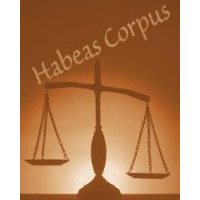High Court Responds to 500-Page Habeas Corpus Writ with 122-Page Smackdown

The California Supreme Court, reacting to a heavy caseload of capital crime appeals from prisoners, unanimously decided to put a 500-page limit on habeas corpus briefs that are often filed after conviction. The court took 122 pages to make its case for strict restrictions, including a 50-page limit, on arguments which might literally involve life and death.
Justice Kathryn Mickle Werdegar wrote for the court, “Some death row inmates with meritorious legal claims may languish in prison for years waiting for this court's review while we evaluate [other prisoners’] petitions raising dozens or even hundreds of frivolous and untimely claims.”
Habeas corpus has been a touchstone of Anglo-Saxon jurisprudence for a thousand years, and is explicitly protected by the U.S. Constitution. That hasn’t prevented it from becoming a political battleground and a popular cause of law-and-order conservatives who feel that victims’ rights have been slighted in protecting prisoners’ rights.
The high court has complained about the length of habeas corpus briefs for years, but finally decided to act after a prisoner on death row since 1980—who had legally changed his name from Harold Ray Memro to Reno—went through eight court-appointed attorneys on his way to filing a 519-page habeas corpus petition, plus exhibits.
Reno was convicted of murder after sexually assaulting and strangling a 7-year-old boy in 1976 and slashing the throats of two pre-teen boys in 1978. Virtually all the evidence was based on his confession, which he claimed was coerced. He did win a new trial in 1985, but by the police destroyed all the files in his case before its start two years later.
Reno got the death penalty a second time, filed a state habeas corpus appeal in 1995 and a federal habeas corpus three years later. His final habeas corpus appeal in 2004 generated the court’s crackdown.
The Criminal Justice League Foundation, a Sacramento-based victims’ rights organization, hailed the decision as “a first step to pare back the time and tax dollars wasted on unnecessary, repetitive appeals on claims that typically have nothing to do with the guilt of the murderer.”
Civil liberties groups involved in prisoner rights saw it as a serious setback. Habeas corpus briefs can easily take 20 pages (of the allowed 50) just outlining the facts of the case and its procedural history.
Some see the court’s decision, to some extent, as a result of changes made at the federal level. In 1996, after the Oklahoma City killings, Congress passed The Antiterrorism and Effective Death Penalty Act (AEDPA). The law set up a one-year filing deadline in federal court and made it nearly impossible to file more than one petition, even if new evidence is uncovered later. Subsequent court rulings further restrained habeas corpus.
In response to the federal restraints, lawyers felt compelled to load up their state briefs with arguments that could be helpful in navigating technical aspects of the legal system. Douglas A. Berman called it “the revenge of AEDPA.”
“Now that capital defendants really only get one bite at the federal habeas apple, it makes sense for them to seek to keep biting off as much as they are allowed to chew in state courts,” Berman wrote at the Sentencing Law and Policy blog. “Add in the need for defense counsel to preserve constitutional issues under the Fifth, Sixth and Eighth Amendment that seem often to be ‘evolving’ in recent years to benefit defendants, and it comes as little surprise that the California Supreme Court is tired of having to wade through all the stuff that defense counsel may feel compelled to throw against the habeas wall in the hope that something will stick.”
–Ken Broder
To Learn More:
State Supreme Court Puts Strict Limits on Habeas Petitions (by Scott Graham, The Recorder)
Court Maps Out End to Abusive Habeas Petitions (by Philip A. Janquart, Courthouse News Service)
Man Rots in Prison Two Years after Judge Says He’s Innocent (by Ken Broder, AllGov)
California Supreme Court Details Restrictions on Successive Habeas Filings (by Douglas A. Berman, Sentencing Law and Policy)
In re RENO on Habeas Corpus (California Supreme Court) (pdf)
- Top Stories
- Controversies
- Where is the Money Going?
- California and the Nation
- Appointments and Resignations
- Unusual News
- Latest News
- California Forbids U.S. Immigration Agents from Pretending to be Police
- California Lawmakers Urged to Strip “Self-Dealing” Tax Board of Its Duties
- Big Oil’s Grip on California
- Santa Cruz Police See Homeland Security Betrayal in Use of Gang Roundup as Cover for Immigration Raid
- Oil Companies Face Deadline to Stop Polluting California Groundwater





